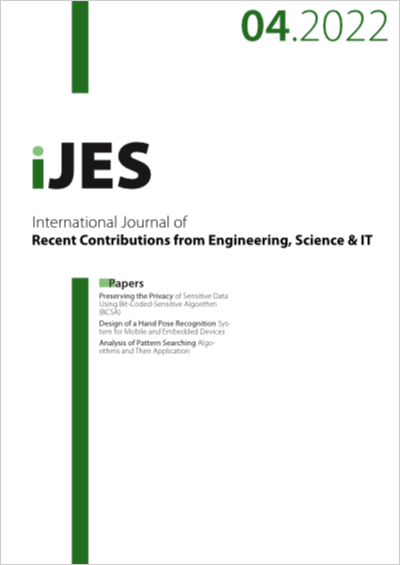Analysis of Pattern Searching Algorithms and Their Application
DOI:
https://doi.org/10.3991/ijes.v10i04.35295Keywords:
Pattern searching, Algorithm, String matching, Comparsion of Pattern searchingAbstract
Nowadays data is growing tremendously. Therefore, there is a great need to store and process data. The problem of Pattern Searching has different applications. When searching for text or words in computer application systems, Pattern searching is used to display the search results. The purpose of Pattern searching is to find text within another text. For example, searching for text in books will take a long time and is hard work. Using Pattern searching will save you time and effort. If similar words are found within the requested text, it will underline the word similar to what was requested, otherwise it does not display any matches if there are no similar words within a text. This paper presents comparisons of the speed of different Pattern searching algorithms, precisely the Naive, KMP, Rabin-Karp, Finite Automata, Boyer-Moore, Aho-Corasick, Z Algorithm algorithms. We will test the time complexity of these algorithms in the three programming languages C#, Java and Python using three different CPUs. According to the results that appear in this comparison, we are able to perform the comparison between the programming languages and the comparison between the CPUs used in this research.
Downloads
Published
How to Cite
Issue
Section
License
Copyright (c) 2022 Festine Retkoceri, Prof.Dr. Florim Idrizi, Prof.Dr. Agon Memeti, Prof. Dr. Florinda Imeri, Doc.Dr. Shpend Ismaili

This work is licensed under a Creative Commons Attribution 4.0 International License.
The submitting author warrants that the submission is original and that she/he is the author of the submission together with the named co-authors; to the extend the submission incorporates text passages, figures, data or other material from the work of others, the submitting author has obtained any necessary permission.
Articles in this journal are published under the Creative Commons Attribution Licence (CC-BY What does this mean?). This is to get more legal certainty about what readers can do with published articles, and thus a wider dissemination and archiving, which in turn makes publishing with this journal more valuable for you, the authors.
By submitting an article the author grants to this journal the non-exclusive right to publish it. The author retains the copyright and the publishing rights for his article without any restrictions.
This journal has been awarded the SPARC Europe Seal for Open Access Journals (What's this?)


